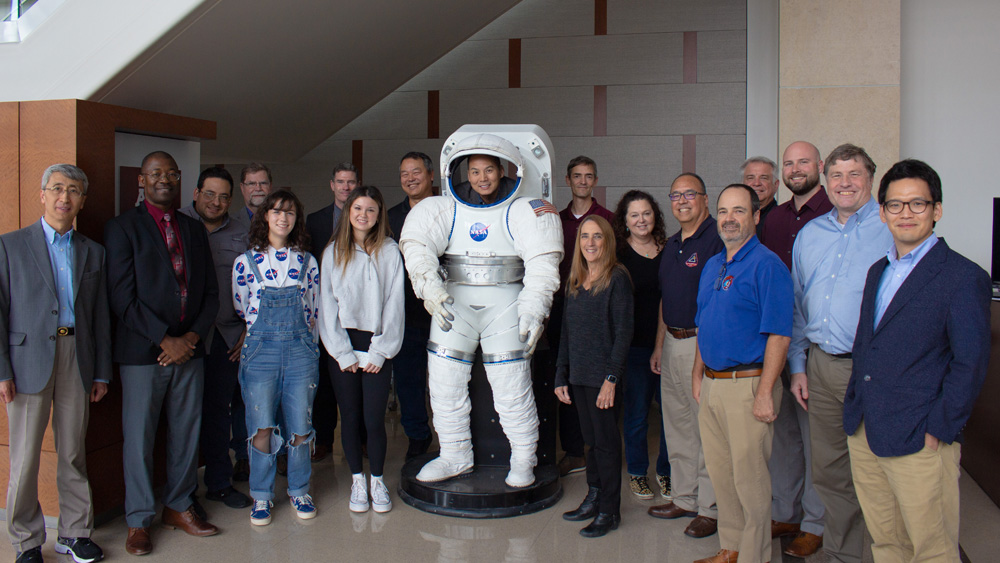
The stars recently aligned at Texas A&M University with multiple representatives from NASA visiting campus to share their stories with students, faculty and staff.
The Wm Michael Barnes ’64 Department of Industrial and Systems Engineering hosted its first NASA Day on Nov. 2. Students and faculty had multiple opportunities to meet and learn from the NASA representatives. Experts brought a spacesuit model and a virtual reality simulation of walking on the moon’s South pole that students could interact with. In the simulation, they had the ability to virtually move rocks, drive a rover and climb a ladder to the lunar module.
“We have simulations of the different mission functions, like flying the jet pack, driving the rover on the lunar surface and exploring different robot dynamics,” said Asher Lieberman, systems engineering simulator manager in the Software, Robotics and Simulation Division at Johnson Space Center. “All those models and dynamics need to have very high fidelity so we can train and practice space dynamics on Earth. That way, there aren’t any surprises when they get in orbit.”
Erin Maddix, industrial and systems engineering senior at Texas A&M, said she heard about the event and wanted to come to learn as much as possible.
“Human factors and ergonomics is my focus,” Maddix said. “I’ve been trying to gain as much experience as possible before I graduate with my bachelor’s degree. NASA is doing a lot of cool stuff that will involve human factors in the future, and I wanted to learn more about it as well as meet some current employees to ask them about their experiences. I'm excited the department was able to get so many people down here.”
Dr. Lewis Ntaimo, department head, said events like NASA Day are important to show the variety of careers industrial and systems engineering students can pursue.
“We have several former students working at NASA today,” Ntaimo said. “Showing our students what kinds of career opportunities are open to them at NASA is valuable, and we hope to host similar events in the future.”
A panel of five experts spoke with students about their career journeys to NASA, offered advice and answered student questions.
The panel members included:
- Elmer “Bubba” Johnson ’83, occupational safety manager specializing in Program Assessment, Security and Fire Operations
- Ronald Lee ’86, chief of NASA’s Office of Emergency Management at the Johnson Space Center
- Asher Lieberman, systems engineering simulator manager in the Software, Robotics and Simulation Division at the Johnson Space Center
- Mike McFarlane, chief, Simulation and Graphics Branch
- Eddie Paddock, virtual reality technical discipline lead
“I would tell you all that if NASA or working in space is something you want to do, it's been a great 36 years for me,” Lee said. “I’m excited about what I've been able to do and what I've been a part of.”
All members of the panel encouraged students not to hesitate to apply for positions at NASA that they’re interested in. Some examples of avenues included internships and contract work. McFarlane, for example, worked as an intern while he was an undergraduate student and said the experience benefited him greatly.
“It was so valuable to come to NASA and sit down next to some of the smartest people in the world and see how they went about attacking these problems so that we could fly in space successfully,” McFarlane said. “At the end of the day, that's what engineers are. We're problem solvers.”
Daniel Levi, industrial and systems senior at Texas A&M, said he appreciated that the panelists shared their different backgrounds and the paths they took to get to NASA.
“It was cool to hear all the stories about contracting and that there's a lot of different pathways to get there,” Levi said. “It doesn’t matter where you start — you’re going to end up at the same place and work on all these really cool projects.”